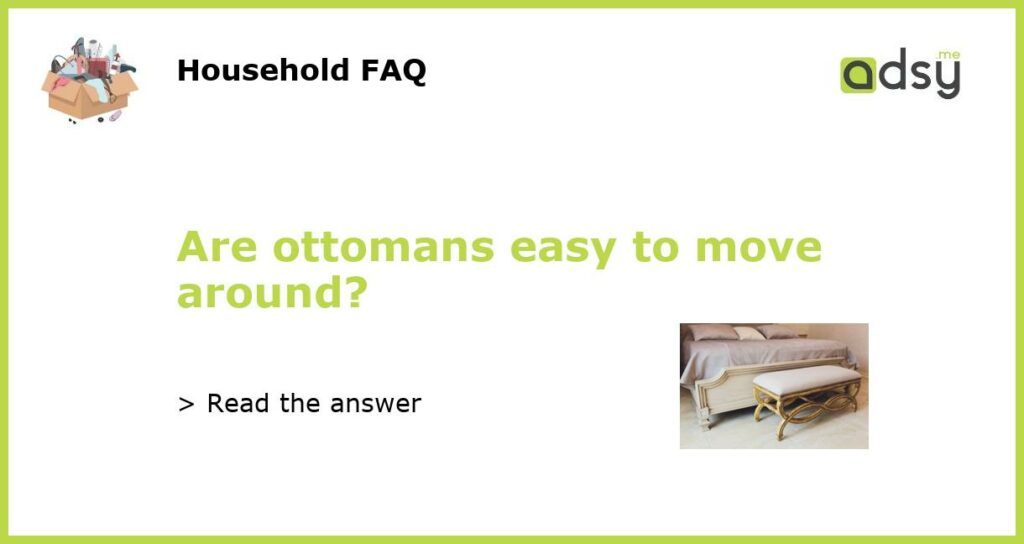Yes, ottomans are easy to move around
Every so often, we find ourselves rearranging furniture to give our homes a fresh look or to create more space. When it comes to moving furniture, ease of movement is a key factor to consider. One piece of furniture that many people wonder about is the ottoman. So, are ottomans easy to move around? The answer is yes, and here are five reasons why:
Compact and Lightweight Design
Ottomans are known for their compact and lightweight design, making them easy to move around. Unlike heavy pieces of furniture such as sofas or coffee tables, ottomans are typically smaller and lighter in weight. This means that you can easily lift and move them without straining yourself or needing assistance.
Furthermore, ottomans often have simple designs without any intricate features. This makes them even more lightweight and easier to transport from one room to another. You can easily slide an ottoman across the floor or lift it with one hand to place it in a different location.
Versatility and Portability
Another reason why ottomans are easy to move around is their versatility and portability. Ottomans come in various shapes and styles, including square, rectangular, round, and even storage ottomans with hidden compartments. These different designs allow you to choose the perfect ottoman for your needs.
Being portable, ottomans can be used in multiple rooms and for different purposes. For example, you can use an ottoman as a footrest in the living room, an extra seating option in the bedroom, or even as a makeshift coffee table. The ability to move them around easily enables you to quickly adjust your furniture arrangement to suit your needs and preferences.
Maneuverability on Different Floor Surfaces
One of the concerns when moving furniture is how well it will glide or roll on different floor surfaces. Ottomans are generally designed to be used on a variety of flooring types, including hardwood, carpet, tile, or laminate. Most ottomans have smooth legs or casters that allow them to move easily without scratching or damaging the floor.
For example, ottomans with caster wheels can roll smoothly on carpeted surfaces, making it effortless to move them around. Even ottomans without wheels can be easily picked up and carried from room to room without causing any damage to your flooring.
Easy Assembly and Disassembly
In some cases, ottomans may require assembly, but most of them come fully assembled and ready to use. This means that you don’t have to spend time and effort putting the ottoman together or needing any special tools. It’s a matter of unpacking it and placing it where you want it.
Additionally, ottomans can be easily disassembled if needed. This can be handy when you need to move or transport the ottoman in a smaller space, such as during a move or when storing it away. Being able to disassemble the ottoman allows for more efficient use of space and makes it easier to handle and transport.
Affordable and Accessible
Last but not least, ottomans are generally affordable and accessible pieces of furniture. Whether you’re shopping at a local furniture store or browsing online, there are plenty of options available at various price points. This means that you can find an ottoman that suits your budget and style preferences.
Since ottomans are widely available, it’s easy to purchase them from different retailers, both brick-and-mortar stores and online platforms. This accessibility makes it convenient to find and acquire ottomans whenever you decide to add them to your home.
In conclusion, ottomans are indeed easy to move around. Their compact and lightweight design, versatility and portability, maneuverability on different floor surfaces, easy assembly and disassembly, as well as affordability and accessibility, all contribute to their ease of movement. Whether you’re rearranging your living room, bedroom, or any other space in your home, ottomans can be effortlessly shifted to create the desired layout or functionality.






